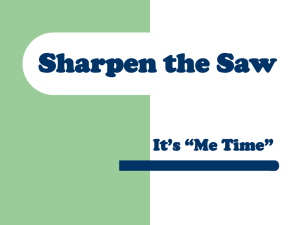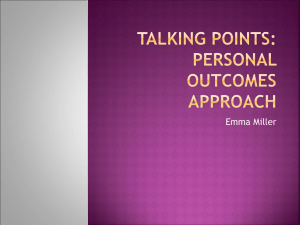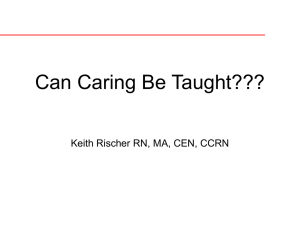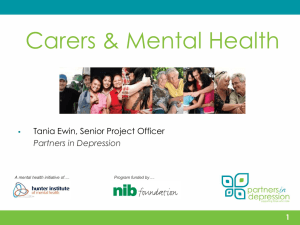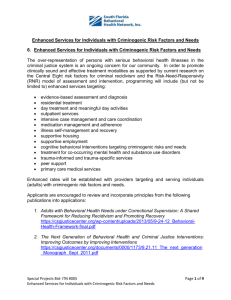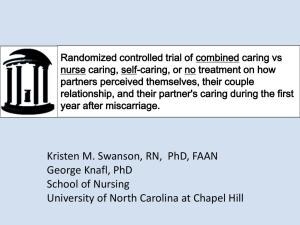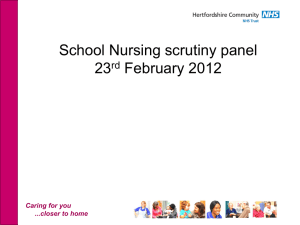1. Presenter: Sarah Boettner
advertisement
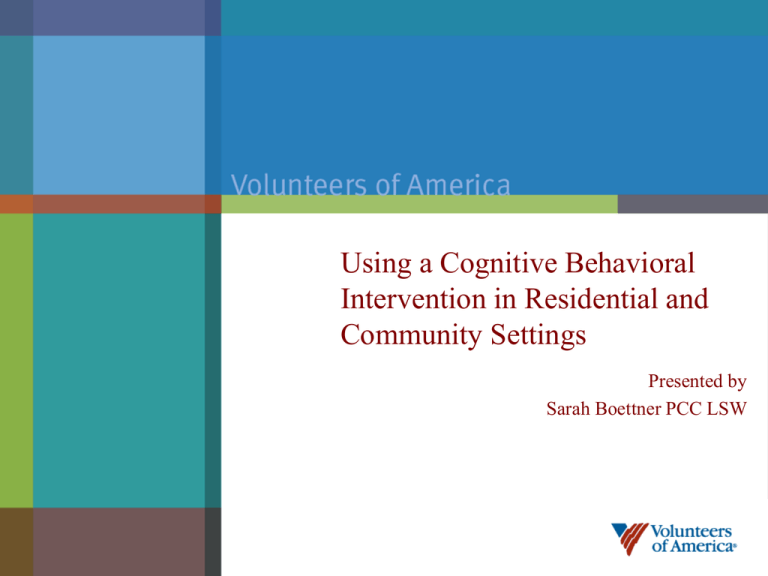
Using a Cognitive Behavioral Intervention in Residential and Community Settings Presented by Sarah Boettner PCC LSW There are no limits to caring.® About Volunteers of America of Greater Ohio Serves individuals, families and communities of: Cleveland Columbus Cincinnati Dayton Mansfield Toledo Services include: Affordable Housing Permanent Supportive Housing Homeless Services Veterans Services Employment & Job Training Correctional Services Thrift Stores Interventions for corrections population: Past and Present Ineffective Talking cures Non-directive, client centered Target non-criminogenic needs Exploring childhood and unconscious Medical model Vague and unstructured Effective Action oriented Directive Target criminogenic needs Target current risk factors Enhance self-efficacy and responsibility Structure..structure…structure The Four Principles of Cognitive Intervention 1. Thinking affects behavior 2. Antisocial, distorted, unproductive irrational thinking can lead to antisocial and unproductive behavior 3. Thinking can be influenced 4. We can change how we feel and behave by changing what we think There are no limits to caring.® Three Principles of Effective Intervention Risk Tells us WHO to target. Target higher risk offenders Need Tells us WHAT to target. Address criminogenic needs identified by assessment Responsivity Tells us HOW to target the interventions to each individual. Identify specific barriers to overcome so the offender gets the most benefit from the interventions. Targeting Criminogenic Need: Results from Meta-Analyses 0.35 Reduction in Recidivism 0.3 0.25 0.2 0.15 0.1 0.05 Increase in Recidivism 0 -0.05 Target 1-3 more noncriminogenic needs Target at least 4-6 more criminogenic needs Source: Gendreau, P., French, S.A., and A.Taylor (2002). What Works (What Doesn’t Work) Revised 2002. Invited Submission to the International Community Corrections Association Monograph Series Project There are no limits to caring.® Effective Intervention = CBT The cognitive-behavioral model of interventions have been proven to be the most effective in reducing recidivism Thinking controls behavior Restructure thoughts to change behavior Identify risky thinking Challenge the risky thinking Replace with alternative prosocial thoughts Lessons Learned from the Research Who you put in a program is important – pay attention to risk What you target is important – pay attention to criminogenic needs How you target offender for change is important – use behavioral approaches Lessons Learned from the Research Offender assessment is the engine that drives effective programs helps you know who & what to target Design programs around empirical research helps you know how to target offenders Program Integrity make a difference Service delivery, disruption of criminal networks, training/supervision of staff, support for program, QA, evaluation There are no limits to caring.® Cognitive Behavioral Interventions BEHAVIOR CHAIN There are no limits to caring.® Cognitive Behavioral intervention tools: Behavior Chain There are no limits to caring.® Cognitive Behavioral intervention tools: Behavior Chain Situation The activating event, or invitation to respond. What happened before the target behavior? Helps identify a pattern of risky situations. Thoughts Immediate and un-censored thoughts that stem from the situation. Identifies core beliefs and values that drive the behavior Feelings One word description of the physical reaction/ sensation associated with the thought. There are no limits to caring.® Cognitive Behavioral intervention tools: Behavior Chain Action What they did in response to that situation Consequences Positive and negative consequences Internal and external There are positive outcomes to a negative behavior Helps predict what outcome will be to similar situations There are no limits to caring.® Behavior Chain: Example & Practice There are no limits to caring.® Application & Barriers Who are our clients? (Describe them) What barriers might they experience to hinder success? What needs do they have that we could use the behavior chain to address? What barriers to you face when working with your clients? What tips do you have that have helped you help your client? What is our role? WHO- all of us WHERE- incarceration, residential, community WHAT- programming, teaching new skills WHY-reduce recidivism HOW-teamwork and consistency There are no limits to caring.® For more information www.voago.org
